Order 731
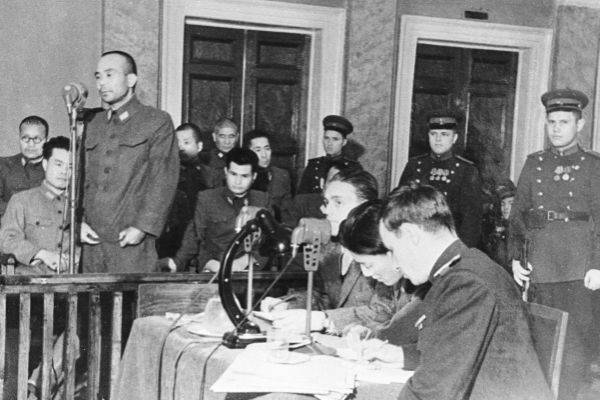
The Khabarovsk process began on December 25 on 1949, on the day when the grand celebration of JV Stalin's 70 anniversary continued throughout the country. Only on the last page of Pravda, filled with toasts, without any explanation, was the text of the indictment in the 12 case of the former Japanese army soldiers "accused of preparing and using bacteriological weapons, ie, in a crime under Art. 1 of the Decree of the Presidium of the USSR Supreme Council of 19 on April 1943. "And the next day, the country's main newspaper posted a TASS report on the beginning of the process and a report on the first day of the 1. And also only on the 4 page ...
The Khabarovsk process in the future did not attract much public attention, story its preparation and conduct is still little studied.
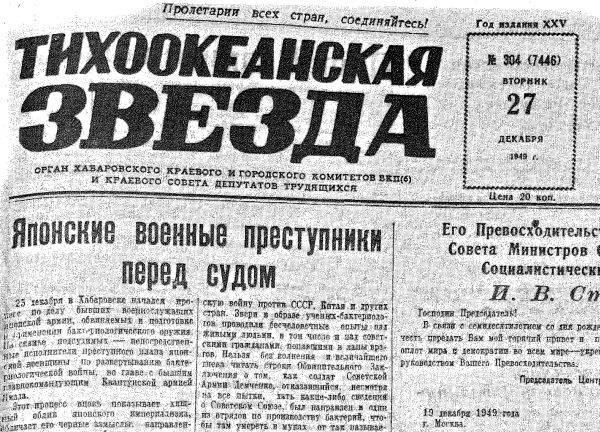
Two parallel investigations
As you know, soon after the end of the Second World War, the Japanese war criminals were tried in Tokyo - the International Military Tribunal (MW) for the Far East, at which 11 states were represented, including the USSR. It was held in accordance with the order of the Commander-in-Chief of the Allied Occupation Forces, General of the US Army D. MacArthur from 3 May 1946 to 12 in November 1948, the main prosecutor was the American representative J. Kinnan.
By that time, both the American and the Soviet military had at their disposal facts indicating that Japan had bacteriological weapons2. However, there was obviously no serious evidence. This explains the absence of the relevant item of the prosecution in the tribunal’s agenda.
It is not difficult to assume that each of the parties was interested in gaining access to this information as soon as possible. Allied relations during the Second World War rapidly and predictably frozen.
Immediately after the end of hostilities, the Americans formed a special group to identify people in Japan who possessed scientific and technological information (this was the case after the defeat of Germany). The group worked from September to October at 1945 under the guidance of an expert at Camp Detrick, where US biological and chemical weapons were developed. We note that its task did not include the identification of war crimes. The legal department of the General Staff of the Supreme Commander of the Allied Powers D. MacArthur3 was engaged in collecting information on the war crimes of Japan.
An 10 person involved in bacteriological studies was interviewed. All of them claimed that they were engaged only in the bacteriological protection system of the Kwantung Army4.
The Soviet side, apparently, also carried out a similar search, but at first it was hampered by the confusion that prevailed during the evacuation of the Japanese in the USSR5. Recall that soon after the end of hostilities more than 500 thousand Japanese prisoners of war and interned 6 were taken out of Manchuria in the USSR.
In January, 1946, the United States resumed its investigation in Japan. This was due to the fact that in their hands were leaders of the so-called. 731, the main base for the development of bacteriological weapons, Generals Kitano and Ishii. Ishii Shiro was the main instigator and organizer of work related to the creation of bacteriological weapons (which was yet to be determined). Shortly before the Soviet Army occupied Manchuria, he managed to evacuate with most of his staff in Korea, taking the archive with him. All equipment, detachment premises, as well as survivors of people who underwent medical experiments, were destroyed7. From Korea, Ishii moved to Japan, where he was discovered by the Americans.
Interrogations continued until the end of May, but neither Ishii nor Kitano acknowledged the facts of medical experiments and the use of biological weapons.
In the Soviet camps, an active search for Japanese prisoners of war involved in the development of bacteriological weapons most likely began in the summer of 1946. This was due to the fact that the charge phase of the Tokyo trial began on June 4. Head of the Investigation Department Roy Morgan appealed to the Soviet prosecution with a request to organize the interrogation of Kajitsuka Ryūji - "the Soviet captive head of the sanitary service of the Kwantung Army on the preparation of the Japanese bacteriological warfare ..." 1946. And in early August of 8, Lieutenant-General Kajitsuka Ryuuji was interrogated as a witness, but did not report anything about the development of the 1946 bacteriological weapon.
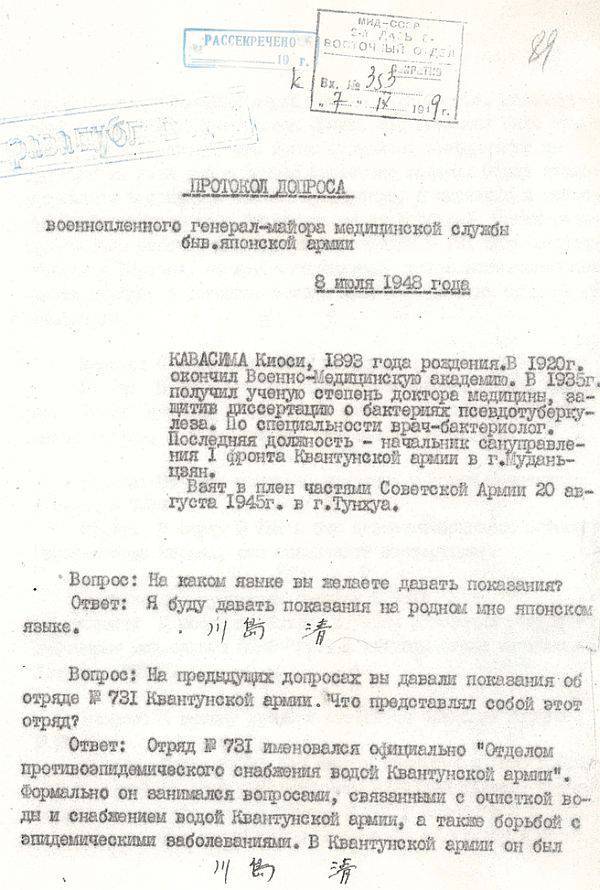
Valuable witnesses
However, the search continued, and 11 August as a witness was interrogated by Major General Kawashima - head of the production department of the 731 squad from 1941 to March 1943. He was the first to give evidence about the criminal activities of the detachment and monstrous experiments on people. The general also reported on the results obtained by the Japanese in the study of the immunity of the human body, improving the effectiveness of anti-plague and typhus vaccines, etc. 10
29 Aug. 1946, Assistant American Prosecutor David N. Sutton, in his speech at the Tokyo Process, reports on the practice of using civilian prisoners in a medical laboratory. According to the testimony of L.N. Smirnov, who was a member of the Soviet Prosecution Group at the Tokyo Trial and later became the State Prosecutor at the Khabarovsk Trial, this report attracted the attention of the International Tribunal. The court asked the US prosecution to provide more comprehensive evidence of the criminal activities of the 73111 squad. The Americans turned to their Soviet colleagues for assistance12.
In the meantime, another witness began to give valuable evidence in the USSR - the major of the medical service, the former head of the 4 division of the 731 squad, Karasawa Tomio. He spoke in detail about the size, structure, main directions and criminal methods of the detachment's activities, and the role of Ishii Shiro in the development of 13 biological weapons.
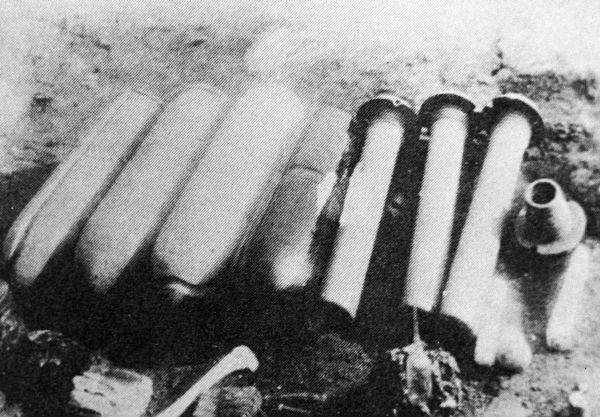
American U-turn
The materials collected in the USSR were presented to the main prosecutor Kinnan, who "found it desirable to use the testimony protocols for the court ... Kawashima Kiosi and Karasawa Tomio with the delivery of both to the Tribunal to give evidence" 14. The Soviet side agreed with this.
However, the position of the American prosecution soon changes dramatically. It rejects these materials, considering them insufficient to support their accusation of 15 in the dock. Moreover, the explanation of the Americans was extremely vague. Their motives will become clear soon. In the meantime, the USSR decides to prepare an independent accusation on the MVT using these witnesses. In this regard, 7 January 1947. Soviet prosecutor A.N. Vasilyev sent a letter to the legal department of MacArthur’s headquarters, in which the Soviet side asked her to extradite Ishii Shiro “as a war criminal who committed crimes against the USSR” 16. It is not quite clear what the calculation was made of. Most likely, the propaganda effect, because it was clear that the Americans will not give Ishii. But at the same time, the United States was put in a difficult position: in their hands was not just the owner of valuable information, but a war criminal.
According to Japanese professor Zunesi Keyichi, who investigated the declassified materials of American archives, the information in the letter was to be a shock for analysts from Camp Detrick and the US General Staff. It undeniably proved that their investigation was incomplete in 17. An employee of the Camp Detrick base is urgently sent to Japan. And a month later, the American command of the armed forces in the Far East concludes: Ishii and his former employees must be guaranteed immunity from prosecution. And get additional information from them under the guarantee that all information received will be classified as 18.
Obviously, this time Ishii and his henchmen became quite frank with the Americans. At the end of June 1947, a comprehensive progress report was compiled. It includes materials from the 60 page report (not yet declassified), on which the 19 military medics worked on the month - key figures of the Japanese bacteriological warfare program19. The American military, thus, became the owners of a unique medical information obtained as a result of experiments on people.
Needless to say, they were not going to share it with yesterday’s allies?
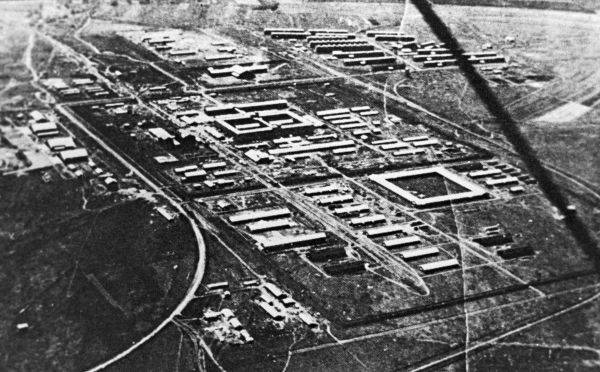
Judge - in the USSR!
Meanwhile, in the Soviet camps of Japanese prisoners of war, there was an active "operational work to identify and interrogate the employees of the anti-epidemic units of the Kwantung Army" 20. Gradually, a large-scale picture of the criminal activities of special units of the former Kwantung Army emerged. Soon a circle of witnesses was identified - 36 prisoners of war. It included the future accused of the Khabarovsk process, including Lieutenant Colonel of the Medical Service of the Japanese Army Nishi Xunei (Toshihide), former Commander of the Kwantung Army, General Yamada Otozoo, Major General Kazitsuka Ryuji, Major General Kawashima Kiosi, General Lt.T.
Obviously, at this time, the idea arises of holding in the USSR an independent judicial process over the Japanese military involved in the development of bacteriological weapons. In addition to the just punishment of criminals, the process could be used in a sharpening ideological and political struggle with the United States. It has already become clear that the former allies decided to use the Japanese war criminals in their own interests and release them from responsibility.
The Minister of the Interior, S.N. Kruglov, who sent 19 February 1948, to the Foreign Ministry a corresponding letter. September 5 1949. Foreign Minister A.Ya. Vyshinsky directs V.M. Molotov letter, which proposes to begin the preparation process. Molotov, having examined it, instructs to submit this question for discussion by the CC21. And on September 7, 1949 was drafted a secret decree of the USSR Council of Ministers, which entrusted the Ministry of Internal Affairs, the Ministry of Justice and the USSR Prosecutor’s Office "to organize an open trial in Khabarovsk over the top officials of the so-called Anti-Epidemic Detachment N 731," methods of their use in the war against the Soviet Union and China. " After approving the 30 of September I.V. Stalin was sent a draft resolution of the Central Committee of the CPSU (b) and the Council of Ministers of the USSR, then approved at a meeting of the Politburo of the Central Committee 8 in October 1949 g. 22
7 people were supposed to be judged: Generals Kajitsuka, Kawashima, Takahashi, Sato, Lieutenant Colonel Nishi and Majors Karasawa and OnouxNNXX. At that time, the question of including the former commander of the Kwantung Army, General Yamada, who “in order to conceal traces of the 23 squadron’s activity ordered the personnel to evacuate to South Korea and destroy the premises, was discussed.” At the same time as the destruction of the detachment’s premises, the prison, in which was before the 731 experimental prisoners "500.
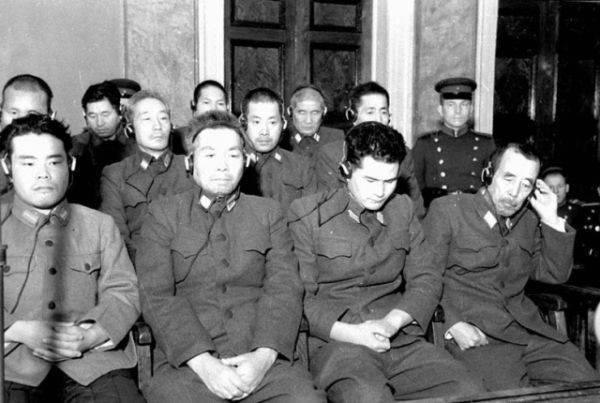
Equate to the crimes of the fascist German army ...
In the twenties of October 1949, intensive interrogations of potential defendants began. During interrogations, one of the members of a group of microbiological scientists invited from Moscow was necessarily present, and Soviet specialists noted that the Japanese had advanced far enough in their bacteriological studies25.
During the investigation, numerous evidences of criminal activity of employees of the 731 squadron and its branches were collected on the creation, testing and facts of the use of bacteriological weapons in combat operations, inhuman medical experiments on people that inevitably led to their death.
On October 30 1949, the aforementioned suspects, as well as two employees of the veterinary squad N 100, lieutenant Hirazacure and senior noncommissioned officer Mitomo, were charged under article 58-4 of the Criminal Code of the RSFSR. All of them admitted their guilt, accused Sato - in part. Thus, the circle of defendants was 9 people.
At the end of November 1949, the Minister of the Interior Kruglov, the Minister of Justice Gorshenin and the Prosecutor General Safonov reported to V.M. Molotov on the completion of the investigation in respect of these persons and made a number of proposals. Among them: arrest and judge General Yamada, re-qualify the article to all the accused and try them by the Decree of the Presidium of the Supreme Soviet of the USSR on April 19 1943 "On the penalties of German fascist criminals for atrocities committed against Soviet citizens." As explained, "although the Japanese military is not mentioned in this Decree, their criminal activities are similar to the crimes of the German fascist army." All defendants were asked to be sentenced to stay in corrective labor camps for a period from 10 to 25 years. The trial was supposed to start on December 7 in Khabarovsk and finish no later than December 14 26.
After the adoption of amendments to the Decree of the Council of Ministers of the USSR of 8 in October 1949, a criminal case was initiated against Yamada on the basis of 1 Art. Decree of 19 on April 1943 of 27 The same decision was made in respect of another accused - a former orderly nurse at the research department of the 643 branch of unit N 731 of corporal Kikuchi Norimitsu. And on December 5, the military prosecutor signed a decree on retraining the charges against this article to all suspects28. Last of all, 9 in December 1949, was included in this group of Kurushim Yuji, a former laboratory assistant of the 162 branch N of the 73129 squad.
Thus, the process, originally planned as a trial of the leaders of the 731 squad, acquired a different status.
Приговор
The Khabarovsk process began on December 25 of 1949 and lasted six days at the premises of the House of Officers of the Soviet Army. The case was considered in open court sessions by the Military Tribunal of the Primorsky Military District. There were 12 people in the dock.
The indictment noted that in 1935-1936. by order of Emperor Hirohito, two completely secret formations were deployed on the territory of Manchuria, designed to prepare and wage bacteriological warfare. One of them, organized on the basis of the Ishii laboratory, was given the name "Directorate for Water Supply and Prevention of the Kwantung Army Units", and the other, the "Hippo-epizootic Department of the Kwantung Army". In 1941, after the attack of Hitler's Germany on the USSR, these institutions were encrypted respectively as "squad N 731" and "squad N 100". The first was headed by Ishii Shiroo, the second by the Major General of the Veterinary Service, Wakamatsu Yujiro. Detachment N 731, numbering about 3 thousand employees, was located in 20 km from Harbin to the station. Pingfan; Detachment N 100 - in the town of Mogaton, in 10 km south of Changchun. Both units had 30 affiliates.
The indictment included the sections “Criminal experiments on living people”, “Using bacteriological weapons in the war against China”, “Activating the preparation of bacteriological war against the USSR” and “Personal responsibility of the accused”.
All defendants came up with the last words in which they confessed their guilt; accused Sato - partially. In accordance with the sentence, prisoners of war, Generals Yamada, Kajitsuka, Takahashi and Kawashima received 25 years of forced labor camps, Karasawa and Sato - 20 years, Onoue - 12 years, Mitomo - 15 years, Hiradzakura - 10 years, Kurusima - XNX years 3 of the year.
In the history of the Khabarovsk judicial process there are still a lot of unexplored pages, which is associated with the inaccessibility of many archival documents. At the same time, it is obvious that this story cannot be understood outside the context of the Cold War, the growing rivalry between the USSR and the USA. Nevertheless, it is necessary to emphasize that it was the Khabarovsk 1949 process, and no other, that uncovered the crimes of the Japanese army in developing and testing bacteriological weapons, revealed facts of medical experiments on people comparable in cruelty to the actions of German Nazi doctors during World War II . And this is its unconditional historical significance.
Notes
1. True. 1949. 26 December.
2. Tsuneishi Kei-ichi. Reasons for the Failure to Prosecute the 731 Unit and Beyond Victorian Justice? The Tokyo War Crimes Trial Revisited. Edited by Yuki Tanaka, Tim McCormack, and Gerry Simpson (International Human Rights Law; v. 30). Leiden - Boston, 2011. P. 184-185; Archive of Foreign Policy of the Russian Federation (AVPRF). F. 0146. Op. 30. P. 282. D.29. L. 269.
3.Tsuneishi Kei-ichi. Op. cit. P. 198.
4.Ibid. P. 192.
5. AVPRF. F. 0146. Op. 30. P. 282. D.29. L. 30.
6. RGVA. F. 56 n. Op. 23. D. 18.
7. Karasev S.V. The history of captivity: the Soviet-Japanese war and its consequences (1945 - 1956). Abstract for ... Doctor. ist sciences. Ulan-Ude, 2007. C. 35. It should be noted that among them were voluntarily surrendered, which was a violation of the provisions of the Potsdam Declaration, which guaranteed an immediate return to the homeland of soldiers and officers of the Kwantung Army who voluntarily surrendered. (EL Katatonova. The role of the USSR in the victory over Japan: debatable questions (abstracts) // http: OneKorea.ru/2014/09/03/katasonova-elo-roli-sssr-v-razgrome-militaristskoj-yaponii/Date date : 25 October 2015.
8. AVPRF. F. 0146. Op. 31. P. 292. D.36. L. 116.
9. RGVA. F. 56 n. Op. 32. D. 9.
10. AVPRF. F. 0146. Op. 30. P. 282. D.29. L. 239, 241.
11. Tsuneishi Kei-ichi. Op. cit. P. 198; The materials of the trial in the case of former soldiers of the Japanese army, accused of preparing and using bacteriological weapons. M., 1950.
12. AVPRF. F. 0146. Op. 30. P. 282. D.29. L. 317.
13. Ibid. L. 249.
14. Ibid. L. 317.
15. Ibid. L. 321.
16. Tsuneishi Kei-ichi. Op. cit. P. 199.
17. Ibid.
18. Ibid. P. 200.
19. Ibid. P. 205.
20. RGVA. F. 56 n. Op. 32. D. 9. L. 105.
21. AVPRF. F. 0146. Op. 31. P. 292. D.36. L. 113.
22. AVPRF. F. 0146. Op. 044. P. 313. D.36. L. 122; RGASPI. F. 17. Op. 137. D. 422. L. 61.
23. RGASPI. F. 82. Op. 2. D. 1387. L. 3, 6.
24. Ibid. L. 6.
25. According to the oral recollections of A.N. Protasov, who worked as a translator, the investigation was conducted "according to all international rules," interrogations were completed in 18 hours. However, the protocols indicate that night-time interrogations, which ended at one in the morning at 2-3-4, were widely practiced. Access mode: http://www.youtube.com/watch?v=gEp0SKLvG7E Revision Date: October 30 2015 ..
26. AVPRF. F. 0146. Op. 31. P. 292. D.36. L. 9-12.
27. RGVA. F. 451p. Op. 20. D. 49. L. 6.
28. RGVA. F. 451p. Op. 20. D. 61. L. 59.
29. RGVA. F. 451p. Op. 20. D. 60. L. 16.
30. The materials of the trial ... C. 8-9.
Information